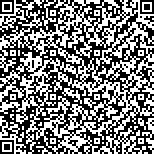| 引用本文: |
张海燕, 杨红秀, 穆亚南, 杨萍, 陈莉.耳穴压豆联合罗伊适应模式在尿毒症患者维持性血液透析治疗中的护理效果[J].湖南中医药大学学报,2024,44(12):2234-2238[点击复制] |
|
| |
|
|
| 本文已被:浏览 1268次 下载 675次 |
| 耳穴压豆联合罗伊适应模式在尿毒症患者维持性血液透析治疗中的护理效果 |
| 张海燕,杨红秀,穆亚南,杨萍,陈莉 |
| (湖南省第二人民医院(湖南省脑科医院), 湖南 长沙 410007) |
| 摘要: |
| 目的 观察耳穴压豆联合罗伊适应模式在尿毒症患者维持性血液透析(maintenance hemodialysis,MHD)治疗中的护理效果。方法 选取2023年4月至2024年4月湖南省第二人民医院肾内科收治的60例尿毒症患者,均行MHD治疗,采用随机数字表法分为对照组(n=30)、观察组(n=30)。对照组实施常规护理+罗伊适应模式,观察组在对照组基础上加用耳穴压豆。对比两组干预8周后汉密尔顿焦虑量表(Hamilton Anxiety Scale,HAMA)、汉密尔顿抑郁量表(Hamilton Depression Scale,HAMD)评分、应对方式、匹兹堡睡眠质量量表(Pittsburgh Sleep Quality Index,PSQI)评分、睡眠状况自评量表(Self-Rating Scale of Sleep,SRSS)评分。结果 干预后,两组HAMA、HAMD、PSQI、SRSS评分和消极应对评分均降低(P<0.05),积极应对评分升高(P<0.05);与对照组比较,观察组HAMA、HAMD、PSQI、SRSS评分和消极应对评分均降低(P<0.05),积极应对评分升高(P<0.05)。结论 耳穴压豆联合罗伊适应模式应用于行MHD治疗尿毒症患者,可改善患者负性情绪,促使其采取积极应对方式,改善患者睡眠质量。 |
| 关键词: 尿毒症 维持性血液透析 耳穴压豆 罗伊适应模式 简易应对方式 睡眠质量 |
| DOI:10.3969/j.issn.1674-070X.2024.12.014 |
| 投稿时间:2024-08-10 |
| 基金项目:湖南省卫生健康高层次人才重大科研专项项目(R2023071)。 |
|
| Nursing efficacy of ear point pressing with seeds combined with Roy adaptation model in maintenance hemodialysis for uremic patients |
| ZHANG Haiyan, YANG Hongxiu, MU Ya'nan, YANG Ping, CHEN Li |
| (The Second People's Hospital of Hunan Province (Brain Hospital of Hunan Province), Changsha, Hunan 410007, China) |
| Abstract: |
| Objective To observe the nursing efficacy of ear point pressing with seeds combined with Roy adaptation model in maintenance hemodialysis (MHD) for patients with uremia. Methods Sixty uremic patients admitted to the Nephrology Department of the Second People's Hospital of Hunan Province from April 2023 to April 2024 were included and all underwent MHD. They were divided into a control group (n=30) and an observation group (n=30) using the random number table method. The control group received routine nursing care and the Roy adaptation model-based nursing, while the observation group received additional ear point pressing with seeds on the basis of the control group's nursing care. The scores of Hamilton Anxiety Scale (HAMA) and Hamilton Depression Scale (HAMD), coping styles, Pittsburgh Sleep Quality Index (PSQI) scores, and Self-Rating Scale of Sleep (SRSS) scores were compared between the two groups after eight weeks of intervention. Results After the intervention, the scores of HAMA, HAMD, PSQI, SRSS, and negative coping decreased (P<0.05), while the positive coping score increased (P<0.05) in both groups. Compared with the control group, the observation group had lower scores of HAMA, HAMD, PSQI, SRSS, and negative coping (P<0.05), as well as a higher positive coping score (P<0.05). Conclusion The ear point pressing with seeds combined with Roy adaptation model can alleviate negative emotions, encourage the adoption of positive coping strategies, and enhance sleep quality in uremic patients undergoing MHD. |
| Key words: uremia maintenance hemodialysis ear point pressing with seeds Roy adaptation model simple coping style sleep quality |
|

二维码(扫一下试试看!) |
|
|
|
|




